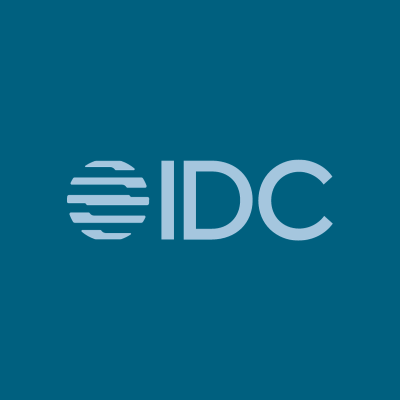What is IT Asset Management?
In IT, teams are responsible for maintaining a vast number of what are known as IT assets. IT assets include just about every tangible and intangible item of value within a company—from physical hardware and computers, to digital systems, software, and information.
IT Asset Management, or ITAM for short, is the process in which a team ensures optimal use and value of these IT assets by carefully maintaining them and monitoring their status throughout their lifecycle. The International Association of Information Technology Asset Managers (IAITAM) defines ITAM as “a set of business practices that incorporates IT assets across the business units within the organization…to manage the overall lifecycle of these assets including tactical and strategic decision making.”
ITAM provides companies with a detailed review of assets allowing IT teams to proactively manage these assets in order to optimize functionality, ensure license compliance, and maximize their lifecycle. In this article we will look at why companies should care about ITAM, the different types and best practices, as well as different tools your team can utilize to improve your own ITAM processes.
Why is IT Asset Management Important?
A company is only as strong as its assets. Without properly functioning computers, your team can’t work as efficiently. And if your systems are improperly set up or poorly monitored, then the end product is likely ineffective or unreliable. This is why it’s so critical, especially for tech companies, to be proactive about how they manage the different physical and digital assets that they, their customers, and stakeholders all rely on.
The goal of ITAM is to get the most out of the assets your company values and extend the amount of time of which they function – or their lifecycle. Each IT asset has a limited lifecycle, but this could be dramatically improved with an effective method of ITAM.
For example, let’s consider all the computers that an organization relies on for their employees to effectively be able to work. Computers – as we all have witnessed too often – do not last forever. However, ITAM is designed to keep computers functioning at their best for as long as possible before they eventually need to be replaced. It ensures that these computers are being well-maintained and updated over time to prevent them from wearing down too quickly. ITAM helps companies extend the life of their valuable IT assets, helping them to better manage costs and avoid having to constantly spend money on replacements, pricey repairs, or other issues that could have been otherwise avoided.
The primary benefits of ITAM include:
- IT cost reduction. Effective management of IT assets can help to identify resources and licenses that can be reduced or eliminated. For example, you may discover a license fee that you’re paying for a tool you no longer use. Or you may be able to reduce the amount spent on replacing computers and hardware through a more proactive form of maintenance with ITAM.
- Increased productivity. Effectively maintaining both hardware and software assets can help increase the effectiveness and efficiency of your internal team that relies on these assets for work.
- Improved user experience and service reliability. When your IT assets are functioning optimally, your users can rely on a consistent user experience and, in turn, increase your brand loyalty.
- Helps ensure and enforce compliance. Teams are able to more easily monitor and enforce compliance with different regulatory requirements, licenses, and security policies.
What is the Typical Lifecycle of an IT Asset?
Each specific IT asset has its own unique lifecycle, which is maximized with an effective IT asset management system. An asset’s lifecycle refers to how it exists within an organization while it is in use.
The typical lifecycle of an IT asset follows these five stages:
- Planning. Each IT asset begins with a strategy and decision regarding 1) what is needed from it, 2) how it can be acquired, 3) how it will be used, and 4) how it will be funded.
- Acquisition. Once a plan has been developed, the asset can then be acquired. This may be done by purchasing, leasing, licensing an existing asset, or by building it internally.
- Integration and installation. After an asset has been procured, it must then be installed or integrated within your existing assets or components, and both operations and support processes.
- Maintenance. In order to maximize each asset, proactive maintenance is critical. ITAM focuses on regular and effective maintenance, updates, and repairs to an IT asset while it is in use in order to generate optimal value, extend its lifespan, and reduce unnecessary costs.
- Retirement. When an IT asset reaches the end of its optimal usefulness, it can then be retired and removed from your systems. This will ensure that all support agreements are ended, license renewals can be cancelled, and you can begin preparing for the transition to a new asset.
The 5 Main Types of IT Asset Management
There are five main types of IT asset management which have to do with types of assets being managed. These include:
- Physical ITAM deals with the lifecycle of hardware including computers and laptops, physical servers, printers, and any other tangible assets that an organization may rely on.
- Digital ITAM consists of the tracking and maintenance of digital assets including data and documentation, media (photos and videos), etc.
- Software ITAM is a bit more complex and demanding as it deals with compliance and licensing requirements, and all IT being used at the organization. These assets must be closely monitored and reviewed to ensure business demands are being met and that software is being changed and updated along with the market.
- Mobile ITAM refers to the management of the different mobile assets or applications being used by individual team members. Mobile asset management ensures that all mobile assets being used are in line with the organization’s goals and priorities.
- Cloud ITAM includes cloud assets such as servers and other software. Effectively managing your cloud IT assets can help to reduce costs associated with physical hardware such as servers, and can also improve use and availability.
IT Asset Management Best Practices
When it comes to ITAM best practices, look no further than the International Standards Organization (ISO). The ISO created a process framework for ITAM best practices known as ISO 19770-1. It states that “effective IT Asset Management enables every organization to reduce its risk associated with the over or under buying of software assets… but also works to ensure the security of those assets through effective tracking and support of the asset throughout the entire software and IT lifecycle.”
According to ISO, some best practices for effective ITAM include:
- Plan for compliance. Before acquiring new assets, ensure that your organization’s installation and use of any licenses are completely legal. This will help avoid any fees or more serious issues that can result from a vendor audit.
- Develop standards for both automated and manual forms of ITAM. While manual forms of ITAM are more demanding and it may seem like a waste of time, they can still be effective in cutting costs in the long run. Automated processes can be much quicker and are far more scalable, but may not be applicable in certain situations. Both large and small organizations can benefit from a combination of manual and automated ITAM.
Choosing Your IT Asset Management Tools & Software
There are many different types of tools that you can use to improve your company’s ITAM systems and processes. Different ITAM tools offer different benefits, including:
- Automated Inventory and Discovery tools are used to identify different hardware and software components that exist within your ecosystem.
- License Management tools help protect your organization by ensuring assets are in compliance with and meeting the requirements of the different licenses in use.
- Patch and Version Management tools are designed to ensure assets such as software and computers are being kept up to date.
- Product/Service Catalog tools can be used to provide team members with a master list of which assets and resources are approved for use and in line with company objectives.
- Digital Asset Management tools are designed to help manage media assets as well as their digital rights and permissions (such as with stock photos or other copyright material).
Give us a call to discuss your organization’s specific situation and which types of IT asset management and tools are right for your team. If PagerDuty is something you’d like to try out, start a 14-day free trial with us today.

Additional
Resources

Report
Digital Operations in 2024 | PagerDuty

Whitepaper
ServiceOps Executive Playbook Modernizing IT Service Management